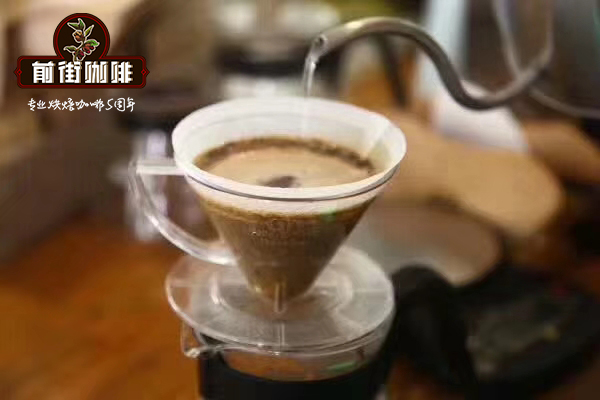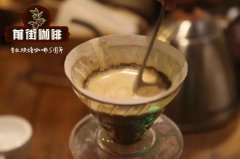What are the skills of hand brewing coffee? Is it easy to get started with hand brewing coffee? What do you need to pay attention to?

Professional coffee knowledge exchange more coffee bean information please follow the coffee workshop (Wechat official account cafe_style)
Now coffee has become an indispensable part of modern life, more and more people begin to pay attention to the texture of life and the spiritual wealth brought by hand work, and gradually begin to abandon the traditional three-in-one coffee brewing and instead enjoy the pleasure of hand-brewing coffee.
As a matter of fact, it is not difficult to say by hand, but there are many mysteries and knowledge in it. In this article, we specially invited Mr. Aarti, owner of Muller Cafe, to share with us the basic techniques, steps and tips of hand-brewing coffee. Take you to complete your own mellow coffee in ten steps from beginning to end!
STEP 1: boil water
It is best to have fresh hot water. In terms of water quality, water that is too hard and soft is not suitable, and different minerals have different effects on coffee extraction. Simple filtered water can usually meet our needs, but please do not use pure water or Ro reverse osmosis; it is completely free of minerals, which will also affect the extraction.
Hard water: easy to extract bitterness and astringency
Soft water: easy to extract the sweet and sour spectrum
STEP 2: weigh the amount of coffee you need
At first, the recommended powder / water ratio is 15 grams of coffee powder to make 200ml coffee. If the amount of powder is less than 15 grams, it will be more difficult to operate and more likely to extract unevenly.
STEP 3: hot water temperature hot filter cup and bottom pot
Does the filter paper need to be soaked first? There are two schools of thought:
Those who advocate washing filter paper first mainly focus on removing the pulp smell of filter paper. Some people think that it is necessary to soak the filter paper to stick to the filter cup first. well, my view is different. )
Those who advocate not soaking first is to make the coffee powder exhaust smoothly, prolong the extraction time, and reduce the degree of coffee diluted by water. (this school believes that if the filter paper is washed first, the coffee powder will begin to soak and affect the extraction.)
You can do whatever you want to make coffee by hand. It is true that the filter paper will affect the exhaust because it fits to the filter cup, so if you want to wash the filter paper first, please add one more process, that is, take out and rearrange the filter paper before cooking, so that it does not fully fit to the filter cup to ensure smooth exhaust. If you do not wash the filter paper first, it is generally recommended to use bleached filter paper to reduce paper smell interference, but the risk of residual bleaching drugs and fluorescent agents is relatively high.
STEP 4: ground beans
Send the prepared coffee beans to the bean grinder. It is suggested that the medium fineness grinding should be used as the reference value at the beginning. People who like cleaner flavor can add the process of sieving out fine powder.
02.jpg
Hand grinding degree of cone cutter powder Mazzer Kony
(compared with No.2 Sugar)
03 (1) .jpg
The Ghost Tooth hand fits the cutting and Grinding degree Fujika Machine Fuji royal DX R220 Mollum Blade
(compared with No.2 Sugar)
STEP 5: put the coffee powder loosely into the filter cup
Pour out the bottom of the pot, put the coffee powder loosely into the filter cup and shake it flat. Do not pat the coffee powder and make the coffee powder fluffy and have space as much as possible. After adding the powder, you can rearrange the filter paper so that there is room for air circulation between the filter paper and the filter cup.
04.jpg
STEP 6: the water temperature of hand-brewed coffee is 8894 degrees.
Put the hot water into the hand flushing pot, and the initial recommended water temperature is 88-94 degrees.
STEP 7: steaming
For the first time, circle the coffee from the center, cover the coffee surface with a small amount of level, and soak all the coffee powder. If the amount of water is appropriate, several drops of coffee will flow from the pot, at most a thin layer at the bottom of the pot, more than this will mean too much water; if there is no dripping at all, the amount of water will be too little. This step is called prepreg, also known as steaming.
If the steaming is successful, the coffee powder will swell up like Shufu. If steaming fails, there are two situations: one is that it collapses without expansion, which is common in uneven water injection or the beans are not fresh; the other is excessive expansion, and the surface layer, such as the crater class, sinks slightly after rupture, and is often found in deep baked beans that are too fresh.
STEP 8: continuous water injection spirally inward
Observe the surface of the coffee powder, if it is still expanding and full of luster, you can continue to wait. If the expansion has stopped and the surface layer gradually loses its gloss, steaming is completed, and the second water injection can be started (but do not wait until the coffee powder layer begins to shrink).
Water injection starts from the center and spirals outward. Pay special attention to the outermost ring at least half a centimeter around the coffee powder wall do not break, around the outermost ring after the same spiral to continue to inject water. The 0.5 cm coffee powder wall is retained in order to maintain the concentration of coffee.
STEP 9: hand coffee is cut off and OR is constantly watered?
Cut off the water, or, keep water? The water cut-off method refers to the injection of hot water in the process of hand flushing, waiting for the coffee extract to flow to the next pot between each injection; continuous water is washed to the end without interruption in the middle. The extraction rate of water cut-off method is higher than that of continuous water. No matter which method is used, the following points should be noted:
Try to maintain the shape of the coffee powder layer to avoid too full water and too high water level.
Continuously inject water spirally and evenly extract coffee. At the same time, observe the color of the surface foam, if the color begins to turn white, stop the extraction immediately.
If you do not want excessive extraction or bitter taste obvious, please try to avoid letting the water in the filter cup leak dry completely. The same is true at the end, when the amount of extraction has reached our preset, or the surface foam has begun to turn white, please remove the filter cup and discard the remaining material.
One rush to the end: this step continues to spiral in and out of continuous water injection, while controlling the amount of water in the filter cup without damaging the filter layer, waiting for extraction to the target milliliter, or stopping extraction when the foam turns white.
Water cut-off method: a slightly larger water column can be used to inject water evenly repeatedly. However, it is necessary to avoid draining the water in the filter cup (when the coffee powder layer in the filter cup is slightly sunken, you can continue to inject water)
STEP 10: cup tasting
After brewing, stir or shake the next pot of coffee slightly and serve in a cup.
I hope you can make a unique cup of coffee for yourself after learning these ten steps of hand-brewing coffee!
Important Notice :
前街咖啡 FrontStreet Coffee has moved to new addredd:
FrontStreet Coffee Address: 315,Donghua East Road,GuangZhou
Tel:020 38364473
- Prev

What are individual coffee beans? how to distinguish the characteristics of single coffee and Italian coffee?
Professional coffee knowledge exchange more coffee bean information please pay attention to the increasing popularity of individual coffee in coffee workshops (Wechat official account cafe_style), so how does single coffee become into the mainstream? According to JeremyT, founder and general manager of UnionHand-RoastedCoffee
- Next

How to use coffee flowers at home, how to practice coffee flowers, what equipment do you need, milk?
Professional coffee knowledge exchange more coffee bean information Please follow the coffee workshop (Wechat official account cafe_style) people all over the world learn to pull flowers from coffee. Its principle is to pour the milk bubbles beat out by steam into the espresso Espresso to form different patterns. The flower-pulling techniques are mainly divided into two kinds: 1. Direct pour method (Free Pour) to control the milk pot, through not
Related
- Beginners will see the "Coffee pull flower" guide!
- What is the difference between ice blog purified milk and ordinary milk coffee?
- Why is the Philippines the largest producer of crops in Liberia?
- For coffee extraction, should the fine powder be retained?
- How does extracted espresso fill pressed powder? How much strength does it take to press the powder?
- How to make jasmine cold extract coffee? Is the jasmine + latte good?
- Will this little toy really make the coffee taste better? How does Lily Drip affect coffee extraction?
- Will the action of slapping the filter cup also affect coffee extraction?
- What's the difference between powder-to-water ratio and powder-to-liquid ratio?
- What is the Ethiopian local species? What does it have to do with Heirloom native species?

